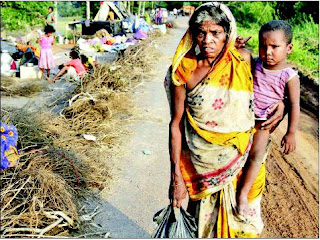About Wadi
Wadi is a census town in Gulbarga district in the Indian state of Karnataka.The Wadi railway junction is an important railway junction on Indian railways. Trains from metro cities of Mumbai, Bangalore, Hyderabad and Chennai pass through this town. Wadi is home to two cement plants of Associated Cement Company Limited ( ACC ) .The ACC has two cement plants of capacity 2.11 and 2.6 million tonnes per annum (mtpa).The cement plants are one of the largest in the country. Wadi is also famous for its Limestone mines. Main source of income is ACC, Railway’s and Working in Lime Stone Mines. The growth of cement plants(ACC) and railways in the region has brought in people from diverse regions and cultures.
Collaborators
The IIT team from Shenoy Innovation Studio, IDC was supported by Mr. Nand Kumar and ACC’s CSR team lead by Ms. Merine John, Mr. Niteshwar Kumar and Mr. Merline for the visit. The team looked into the newly developed flood relief houses built by ACC near Wadi for 40 families. The team then compared these houses with traditional rural houses of the nearby areas. The need for the visit was identified by Prof. Uday Athavankar and Prof. B. K. Chakravarthy during the 1st phase research presentation to ACC team consisting of Mr. Nand Kumar, Mr. A. N. Singh, Mr. P. R. Majumdar, Mr. Bipin R. Khale and Mr. Shyam Narayan to initiate the tabletop concept design as suggested by Mr. Kuldeep Kaura, Chief Executive Officer & Managing Director, ACC in the meeting at ACC on 6th September 2011.
Objective of the study
Ethnographic study of living patterns, local materials, skills, building technologies and conditions was undertaken in areas around ACC plant at Wadi, Karnataka, where rehabilitation work is in progress. The research focus was users’ perspective towards the new and traditional houses alongwith local materials, technology and skills.
Study Method
Two kinds of housing cluster was selected - the newly built rehabilitation houses by ACC and the traditional houses.Observational research through videos and photographs was conducted to map the spatial arrangements of the living spaces and common spaces, both inside and outside the house. Next, one-to-one interviews as well as focussed group interviews were conducted.






































